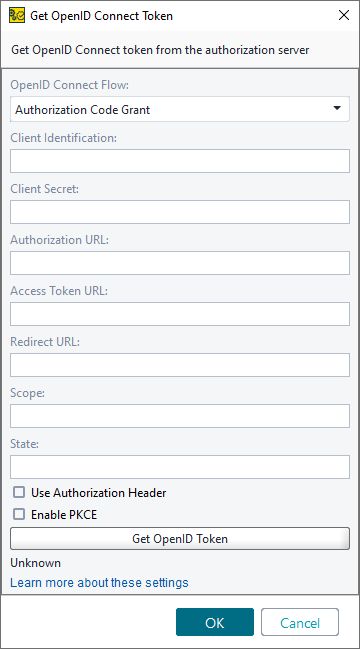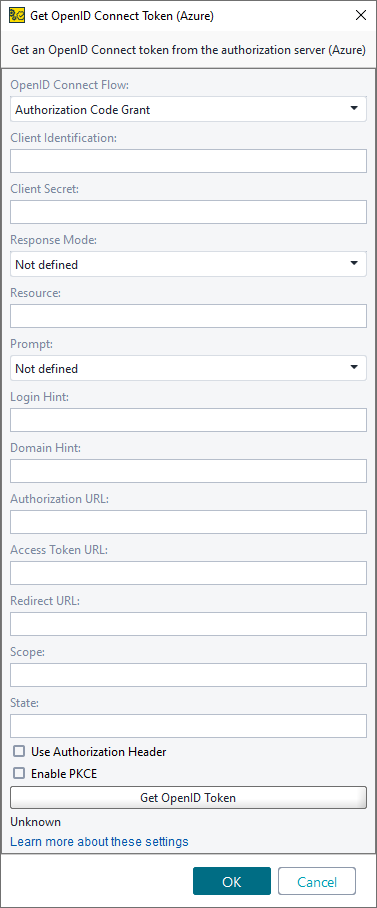The OpenID Connect ID Token is retrieved in almost the same way as an OAuth 2.0 access token when you use Implicit and Authorization Code grants.
When the Authorization Code grant connect flow is used, the resource owner first provides access, then an authorization code is sent to the client through browser redirect. The client then uses it to get an access token. Optionally, a refresh token is also sent.


| Option | Description |
|---|---|
| OpenID Connect Flow | The OpenID Connect method to use. |
| Client Identification | An alphanumeric string used to identify the client. |
| Client Secret | The secret string the client will use. |
| Response Mode | (For Azure only) Specifies how the authorization server sends the access token. Available options:
|
| State | (For Azure only) The value included in the request that is also added to the token response. Usually it is used to provide a randomly generated string to prevent a cross-site request forgery attack. |
| Resource | (For Azure only) The App ID URI of the web service. |
| Prompt | (For Azure only) Specifies if the authentication server prompts the user to log in or consent even if they are logged in. Possible values:
|
| Login Hint | (For Azure only) The string displayed as a login hint in the sign-in form. |
| Domain Hint | (For Azure only) Specifies the domain the user should use to sign in. |
| Authorization URL | The authorization server URL. |
| Access Token URL | The URL to get an access token from. |
| Redirect URL | The URL you will be redirected to after successful authorization. |
| Scope | The full scope string defining the requested permissions. |
| Use Authorization Header | Select to send client credentials in the request header. Otherwise, the credentials are sent in the request body. |
| Get OpenID Token | Click this button to retrieve the OpenID Connect token. |
| Automation | Opens the Automated Token Profile editor. |
